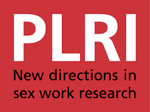As sexually transmitted infection (STI) prevalence rises, individuals substitute away from risky sex; this behavioral response renders STI epidemics self-limiting. In the commercial sex sector, however, prostitutes draw a premium for engaging in unprotected sex, potentially mitigating their propensity to use condoms. While several studies have estimated this premium, none have been able to identify its source as a compensating differential for disease risk.
We write a simple model to motivate a test of compensating differential hypothesis. Using transaction-level data and biological STI markers from sex workers in Ecuador, we show that locations with low disease prevalence exhibit a very low premium for unprotected sex. In approximately 10 percent of locations with zero disease, the risk premium is about one-fourth of that in the market at a whole. Overall, a one percentage point increase in the local disease rate increases the premium for non-condom sex by 33 percent. Market forces may curb the self-limiting nature of STI epidemics.
(abstract authors’ own)
 arunachalam-shah-compensated-for-life-sex-work-disease-risk.pdf
arunachalam-shah-compensated-for-life-sex-work-disease-risk.pdf
Author:
Raj Arunachalam and Manisha Shah

